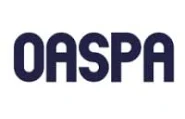توقع الضائقة المالية للشركات باستخدام الانحدار اللوجستي وأثره على ربحية السهم في الشركات المدرجة في البورصة العراقية
توقع الضائقة المالية للشركات باستخدام الانحدار اللوجستي وأثره على ربحية السهم في الشركات المدرجة في البورصة العراقية
DOI:
https://doi.org/10.51930/jcois.21.72.0290الكلمات المفتاحية:
توقع الضائقة المالية ، الانحدار اللوجستي ، ربحية السهمالملخص
ملخص :
لا يطيل منع الإفلاس العمر الاقتصادي للشركة ويزيد من أدائها المالي فحسب ، بل يساعد أيضًا في تحسين الرفاه الاقتصادي العام للبلد. لذلك ، فإن التنبؤ بالعجز المالي يمكن أن يؤثر على عوامل مختلفة ويؤثر على جوانب مختلفة من الشركة ، بما في ذلك أرباح الأسهم. وفي هذا الصدد تبحث هذه الدراسة في التنبؤ بالعجز المالي للشركات التي تستخدم أسلوب الانحدار اللوجستي وتأثيره على ربحية السهم في الشركات المدرجة في البورصة العراقية. الفترة الزمنية للبحث هي من 2015 إلى 2020 ، حيث تم اختيار 33 شركة تم قبولها في البورصة العراقية كعينة ، وتم اختبار فرضيات البحث باستخدام انحدار المربعات الصغرى العادي والانحدار اللوجستي. أشارت نتائج اختبار الفرضية الأولى للبحث إلى أن نتائج الانحدار اللوجستي أحادي الاتجاه من Baytree أشارت إلى تأكيد هذه الفرضية ويمكن القول بثقة أنه من خلال الجمع بين المعلومات المحاسبية والسوقية ، يمكن استخدام نموذج مناسب للتنبؤ بالضائقة المالية للشركات المقبولة المعروضة في البورصة العراقية. كما أظهرت نتائج الفرضية الثانية للبحث أن ربحية السهم هي دالة للتنبؤ بالعجز المالي. تحاول الشركات التي تتنبأ بالعجز المالي إظهار ربح أقل لكل سهم وتحاول أن تكون صادقًا ومن خلال التنبؤ الدقيق لربح السهم وفقًا لنظرية الإشارة ، فإنها تكسب ثقة المساهمين والدائنين وتؤكد أن الشركة تحاول العثور عليها. طريقة جيدة للخروج من الأزمة القادمة.
الكلمات المفتاحية: توقع الضائقة المالية ، الانحدار اللوجستي ، ربحية السهم
المراجع
Ibrahimi, Sayed Kazem, Bahrami Nassab, Ali, Machli, Reda (2015) “The Impact of the Financial Crisis on the Quality of Profit” Accounting and Financial Audit Audit, Volume 23, No. 2, Winter 2015, pp. 415-434
Ahmedpour, Ahmed Shahswari, Masoumeh (2013). 27 to 50
Anwar Khatibi, Saeed and Mohammadi, Ramin (1991) “The Impact of Economic Value Added, Profit Quality and Leverage Ratios for Each Bankruptcy”, Tenth National Accounting Conference, Iran, Tehran, Al-Zahra University
Mahrani, Sasan, Sugham, Yahya and Farzad Ghayur (2016) “Investigating the Impact of Strong Profit Quality Indicators of Forecasting Models on the Financial Deficit” Accounting and Auditing Review, Vol. 24, No. 1, Spring 2016, pp. 126-103. 30
Mansour, Gholam-Reza, Ghayyar, Farzad, Asadi, Maryam (2013) The impact of the profit quality rate in predicting the financial distress of companies listed on the Tehran Stock Exchange, Master Thesis, Urmia University.
Almamy, Jeehan, John Aston, and Leonard N. Ngwa. 2016. An evaluation of Altman’s Z-score using cash flow ratio to predict corporate failure amid the recent financial crisis: Evidence from the UK. Journal of Corporate Finance 36: 278–85
Altman, E. I. (1968). Financial ratios, discriminant analysis and the prediction of corporate bankruptcy. The Journal of Finance, 23(4), 589–609. doi:10.1111/ j.1540-6261.1968.tb00843.x
Altman, E. I., Iwanicz-Drozdowska, M., Laitinen, E. K., & Suvas, A. (2017). Financial distress prediction in an international context: A review and empirical analysis of Altman’s Z-score model. Journal of International Financial Management & Accounting, 28 (2), 131–171. doi:10.1111/jifm.12053
Altman, E.I. (2019), “Financial ratios, discriminant analysis and the prediction of corporate bankruptcy”, The Journal of Finance, Vol. 23 No. 4, pp. 589-609
Altman, Edward I. 1968. Financial ratios, discriminant analysis and the prediction of corporate bankruptcy. The Journal of Finance 23: 589–609
Altman, Edward I. 1968. Financial ratios, discriminant analysis and the prediction of corporate bankruptcy. The Journal of Finance 23: 589–609
Ammar-ud-din, and Bilal Aziz. 2016. Determinants of Financial Distress and Their Impact on Textile Sector of Pakistan Evidence from KSE 100 Index. Asian Journal of Educational Research and Technology 6: 28–37.
Andreou, P., Ehrlich, D., Louca, C. (2013). Managerial ability and firm performance: Evidence from the global financial crisis. Working Paper, Available at http://www.mfsociety.org.
Barth، M.E.، W.H. Beaver، and W.R. Landsman (2001) “The Relevance of the
Value Relevance Literature for Financial Accounting Standard Setting: Another
View”، Journal of Accounting and Economics، 31،77-104
Beaver, W. (2010), “Financial ratios as predictors of failure”, Journal of Accounting Research, Vol. 4, pp. 71-111.
Beaver, W. H. (1966). Financial ratios as predictors of failure. Journal of Accounting Research, 4, 71–111. doi:10.2307/2490171
Bhunia, A., Khan, I., & MuKhuti, S. (2011). A study of managing liquidity. Journal of Management Research, 3, 2. doi:10.5296/jmr.v3i2.574
Carmichael, D.R. (1972), The Auditor’s Reporting Obligation: The Meaning and Implementation of the Fourth Standard of Reporting, American Institute of Certified Public Accountants, New York, NY.
Charalambakis, Evangelos C., and Ian Garrett. 2016. On the prediction of financial distress in developed and emerging markets: Does the choice of accounting and market information matter? A comparison of UK and Indian firms. Review of Quantitative Finance and Accounting 47: 1–28
Charalambakis, Evangelos C., and Ian Garrett. 2016. On the prediction of financial distress in developed and emerging markets: Does the choice of accounting and market information matter? A comparison of UK and Indian firms. Review of Quantitative Finance and Accounting 47: 1–28
Cheng, Wen-Ying, Ender Su, and Sheng-Jung Li. 2020. A Financial distress pre-warning study by fuzzy regression model of TSE-listed companies. Asian Academy of Management Journal of Accounting and Finance 2: 75–93.
Crutzen, Nathalie, and Didier Van Caillie. 2017. The Business Failure Process: Towards an Integrative Model of the Literature. Paper presented at International Workshop on Default Risk and Financial Distress, Rennes, France, September 13–14.
Durana, P., Michalkova, L., Privara, A., Marousek, J., & Tumpach, M. (2021). Does the life cycle affect earnings management and bankruptcy?. Oeconomia Copernicana, 12(2), 425-461.
Foster, G. (1986), Financial Statement Analysis, Prentice Hall, Englewood Cliffs, NJ
Ghufran, B., Awan, H. M., Khakwani, A. K., & Qureshi, M. A. (2016). What causes stock market volatility in Pakistan? Evidence from the field. Economics Research International, 2016.
Gordon, M.J. (1971). Toward a theory of financial distress. The Journal of Finance, 26(2), 347-356.
Hafiz, Alaka, Oyedele Lukumon, Bilal Muhammad, Akinade Olugbenga, Owolabi Hakeem, and Ajayi Saheed. 2020. Bankruptcy prediction of construction businesses: towards a big data analytics approach. Paper presented at 2015 IEEE First International Conference on Big Data Computing Service and Applications, Redwood City, CA, USA, March 30–April 2, pp. 347–52.
Halteh, K., Kumar, K. and Gepp, A. (2018), “Financial distress prediction of islamic banks using treebased stochastic techniques”, Managerial Finance, Vol. 44 No. 6, pp. 759-773.
Hensher, David A., Stewart Jones, and William H. Greene. 2019. An error component logit analysis of corporate bankruptcy and insolvency risk in Australia. Economic Record 83: 86–103
Hopwood, W., McKeown, J., Mutchler, J. (2019). A reexamination of auditor versus model accuracy within the context of the going-concern opinion decision. Contemporary Accounting Research, 10(2), 409-431.
Howe, J. S., & Houston, R. (2015). Earnings management, earnings surprises, and distressed firms. Accounting and Finance Research, 5(1), 64.
Hua Z., Wang Y., Xu X., Zhang B., Liang L. ;"Predicting corporate financial distress based on integration of support vector machine and logistic regression"; Expert Systems with Applications, 33: 434-440, 2007.
Ijaz, M. S., Hunjra, A. I., Hameed, Z., & Maqbool, A. (2019). Assessing the financial failure using Z-Score and current ratio: A case of sugar sector listed companies of Karachi Stock Exchange.
Inam, F., Inam, A., Mian, M.A., Sheikh, A.A. and Awan, H.M. (2018), “Forecasting bankruptcy for organizational sustainability in Pakistan: using artificial neural networks, logit regression, and discriminant analysis”, Journal of Economic and Administrative Sciences, Vol. 35 No. 3, pp. 183-201
Korol, Tomasz. 2017. Early warning models against bankruptcy risk for Central European and Latin American enterprises. Economic Modelling 31: 22–30
Lee , S ., Koh, Y . , & kang, K. H. (2011). Moderating effect of capital intensity on the relationship between leverage and financial distress in the U.S. restaurant industry . International Journal of Hospitality Management . 30, 429 –438.
Li، F. Abeysekera، I. & Ma، S. (2011)، “Earnings management and the effect of
earnings quality in relation to stress level and bankruptcy level of Chinese listed
firms”، Corporate Ownership and Control،9(1).، p1-45
Lin, T. H. (2009). A cross model study of corporate financial distress prediction in Taiwan: Multiple discriminant analysis, logit, probit and neural networks models. Neurocomputing, 72(16–18), 3507–3516. doi:10.1016/j.neucom.2009.02.018
Lin, T.H. (2009), “A cross model study of corporate financial distress prediction in Taiwan: multiple discriminant analysis, logit, probit and neural networks models”, Neurocomputing, Vol. 72 Nos 16/18, pp. 3507-3516
Madan, K. (2017). An analysis of the debt-equity structure of leading hotel chains in India. International Journal of Contemporary Hospitality Management, 19(5), 397-414.
Miller, M. H. (1977). Debt and taxes. The Journal of Finance, 32(2), 261–275.
Nam, Chae Woo, Tong Suk Kim, Nam Jung Park, and Hoe Kyung Lee. 2008. Bankruptcy prediction using a discrete-time duration model incorporating temporal and macroeconomic dependencies. Journal of Forecasting 27: 493–506.
Pindado, Julio, and Luis Rodrigues. 2005. Determinants of financial distress costs. Financial Markets and Portfolio Management 19: 343–59
Rim, E., & Roy, A. (2013). Classifying Manufacturing Firms in Lebanon: An application of Altman’s Model. 2nd World Conference on Business, Economics and Management-WCBEM (pp. 11-18). https://doi.org/10.1016/j.sbspro.2013.12.413
Rim, El Khoury, and Al Beaïno Roy. 2014. Classifying manufacturing firms in Lebanon: An application of Altman’s model. Procedia-Social and Behavioral Sciences 109: 11–18
Roslan, N. H. B. (2014) Determinants of financial distress among manufacturing companies in Malaysia. Doctoral dissertation, School of Business, Universiti Utara Malaysia
Ruihao، Ke (2012)، Predicting financial distress: The Role Earnings Quality.
University of California، Los Angeles
Shumway, T. (2001). Forecasting bankruptcy more accurately: A simple hazard model. The Journal of Business, 74(1), 101–124. doi:10.1086/jb.2001.74. issue-1
Shumway, Tyler. 2011. Forecasting bankruptcy more accurately: A simple hazard model. The Journal of Business 74: 101–24
Shumway، T. 2001. Forecasting bankruptcy more accurately: A simple hazard
model. The Journal of Business 74 (1): 101-124
Siao, W.S., Chou, T.K. (2019). Does managerial ability improve value of cash holdings? Working Paper.
Sri KUSTONO, A., ROZIQ, A., & NANGGALA, A. Y. A. (2021). Earnings Quality and Income Smoothing Motives: Evidence from Indonesia. The Journal of Asian Finance, Economics, and Business, 8(2), 821-832.
Sun, J., Li, H., Huang, Q.-H. and He, K.-Y. (2013), “Predicting financial distress and corporate failure: a review from the state-of-the-art definitions, modeling, sampling, and featuring approaches”, Knowledge-Based Systems, Vol. 57, pp. 41-56.
Sun, Jie, Hui Li, Qing-Hua Huang, and Kai-Yu He. 2014. Predicting financial distress and corporate failure: A review from the state-of-the-art definitions, modeling, sampling, and featuring approaches. Knowledge-Based Systems 57: 41–56. [CrossRef]
Theodossiou, Panayiotis. 2015. Predicting shifts in the mean of a multivariate time series process: An application in predicting business failures. Journal of the American Statistical Association 88: 441–49
Tingwu, F. (2014) . The forward ratio and earnings growth.Advances in Accounting, incorporating, Vol 15, PP. 200-215.
Wagan, Hakimzadi, Mansoor Ahmed Golo, Rani Abro, Bakhtawar, Shahid Hussain Abro, and Zulfiqar Ali. 2016. Corporate Bankruptcy Prediction in Pakistan by Employing Multiple Discriminant Analysis Technique. Developing Country Studies 6: 70–84.
Wang, L., & Wu, C. (2017). Business failure prediction based on two-stage selective ensemble with manifold learning algorithm and kernel-based fuzzy self-organizing map. Knowledge-Based Systems, 121, 99–110. doi:10.1016/j.knosys.2017.01.016
Wang, Zong-Jun, and Xiao-Lan Deng. 2016. Corporate governance and financial distress: Evidence from Chinese listed companies. Chinese Economy 39: 5–27
Wanke, Peter, Carlos P. Barros, and João R. Faria. 2015. Financial distress drivers in Brazilian banks: A dynamic slacks approach. European Journal of Operational Research 240: 258–68
Winakor, A., & Smith, R. (1935). Changes in the financial structure of unsuccessful industrial corporations. Bulletin, 51, 44
Wu, Y., Clive Gaunt, and Stephen F. Gray. 2010. A comparison of alternative bankruptcy prediction models. Journal of Contemporary Accounting and Economics 6: 34–45.
Xu, W., Xiao, Z., Dang, X., Yang, D., & Yang, X. (2014). Financial ratio selection for business failure prediction using soft set theory. Knowledge-Based Systems, 63, 59–67. doi:10.1016/j.knosys.2014.03.007
Yap, B. C. F., Yong, D. G. F., & Poon, W. C. (2010). How well do financial ratios and multiple discriminant analysis predict company failures in Malaysia. International Research Journal of Finance and Economics, 54(13), 166–175
Yi, W. (2019). Z-score model on financial crisis early-warning of listed real estate companies in China: a financial engineering perspective. Systems Engineering Procedia, 3, 153-157. https://doi.org/10.1016/j.sepro.2011.11.021
.jpg)
2.png)







